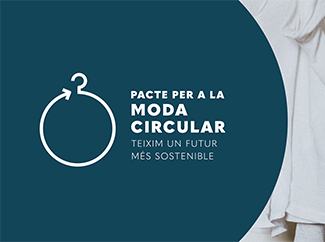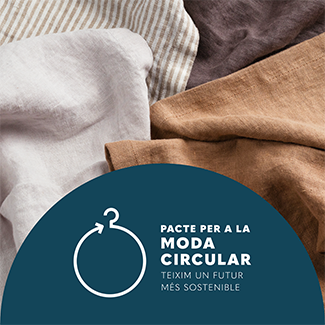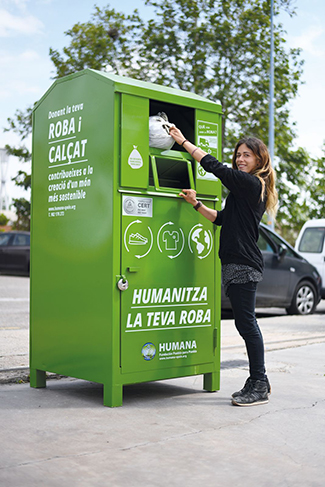Humana, promoter of catalonian Circular Fashion Pact
25-01-2022
The Foundation has been working since February 2021 within the framework of the group promoting the Pacte per a la Moda Circular de Catalunya to define its contents and lay its foundations. The Pacte emerges to be a revulsive that moves the textile sector towards circularity, with the involvement and collaboration of all the links in its value chain.
The creation of the Pacte was an open and participatory process that culminated on January 20 with its second plenary session, where its bases were approved. This plenary session was chaired by the Secretary for Climate Action of the Generalitat de Catalunya, Anna Barnadas, who stressed that "this is an important starting signal, which reaffirms the sector's commitment to circularity and offers interesting opportunities from different prisms ". It is key that the industry faces the challenge of transforming what until now was considered waste into materials that can be re-incorporated into the value chain."
“All this converges in the fact of implementing a shared agenda, with well-defined objectives, how to constitute the best of the strategies to receive the European recovery funds, in such a way that they have an impact on the sector as a whole, and, in this sense, It is necessary that an important value be given to this industrial space”, Barnadas has riveted.
During this initial process of the Pacte, Humana has had the opportunity to contribute its knowledge and vision of the future of the sector, together with the other 30 driving agents of the textile value chain that include manufacturers, distributors and marketers, employers and associations. sectors, waste managers, technological and academic centres, administrations and entities of the third sector. All agents have worked in a coordinated manner to lay the foundations of the Pact that we have just approved.
An initiative with European support
The Pacte was born with the aim of adopting specific commitments to facilitate the integration of the circular economy in the sector and encourage open participation, both by agents in the sector and by consumers, in the transition towards a more sustainable and responsible model, in coherence with the Sustainable Development Goals of the United Nations 2030 Agenda.
The Foundation intends to highlight the pioneering nature of this circular economy initiative, which has been considered a pilot action by the European Commission within the framework of the Interreg CircE Project (2017-2020), which valued its innovative nature and its ability to be replicated in other territories based on the experience developed in Catalonia.
Goals
The promoters of the Pact have established as general objectives a significant reduction in the generation of textile waste and an increase in the percentage of selective collection and recovery of this waste, both for preparation for reuse and for recycling.
Specific objectives have also been defined for the different segments of the textile value chain. In the field of manufacturing, the aim is to increase the durability of products and the percentage of recycled material incorporated into new products.
At the same time, it wants to reduce and eliminate the use of harmful materials, increase reuse with the implementation of new business models and deploy cleaner and more efficient production strategies, among other measures.
To achieve these ambitious goals, work is being done on the implementation of pilot projects to promote the collection of second-hand clothing and its reuse, as well as to improve the selective collection systems for textile waste and local recycling.
Pacte Presentation
A global problem
The textile sector is aware that the waste derived from the production and consumption of clothing is a global environmental problem: each year 100,000 million garments are sold in the world and their useful life is getting shorter (in fifteen years it has been reduced about 20%). By contrast, less than 1% of textile waste is recycled globally.
It is estimated that in Catalonia each person consumes between 21.5 and 26 kg of textiles per year and only 12% of textile waste is selectively collected, a percentage far removed from that of other waste fractions. This implies that more than 147,000 tons of textile waste are incinerated or thrown into a landfill annually in the Catalan territory alone.
More News


